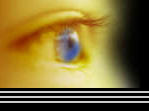How The Celtic Holiday Samhain Became Halloween
By James Donahue
Halloween is a contemporary version of an ancient
Celtic holiday called Samhain, a celebration of the last harvest, the end of summer and for them, the first day of the New
Year.
The Celts celebrated the beginning of the New
Year on November 1 because it was the mid-way point between the Autumn Equinox and the Winter Solstice.
The day also had a dark side because it marked
the beginning of the long cold winter. It was a time of the year associated with human death.
The Celts believed on the night before the New
Year, the veil between the worlds of the living and the dead became blurred. Samhain thus was a strange event that occurred
on the night of October 31. The people believed it was a time that the spirits of the dead returned to earth.
The spirits were believed to damage crops and
cause other troubles so the Druids built large sacred bonfires to frighten them off. During the celebration, the people wore
costumes, usually consisting of animal heads and skins.
When Christianity swept Europe and reached its
tentacles into Ireland and Scotland, the Celtic people not only adopted this new religion, but the church strangely absorbed
the Samhain celebration. Today the fundamental Christians want no part of Halloween and proclaim it profane.
Yet the holiday persists, and it has evolved
through a variety of names including Day of the Dead, All Soul’s Day, All Saint’s Day, Hallowtide, Hallowmass,
Harvest Home, Witches New Year, All Hallow’s Eve and finally Halloween.
Before Christianity arrived, the Romans conquered
the Celtic territory and during the 400 years of Roman rule, the festivals of the Romans were gradually blended in with those
of the Celts. The Romans brought Feralia, a day in late October when they commemorated the passing of the dead. They also
celebrated Pomona, a tribute to the Roman goddess of fruit and trees. It is from this old holiday that the tradition of “bobbing”
for apples on Halloween had its origin.
In the Seventh Century Pope Boniface IV declared
November 1 All Saints’ Day, a time to honor saints and martyrs. It was said the pope was attempting to use the religious
holiday to displace the Celtic festival of the dead. Instead of destroying it, the people of Ireland merely blended the two
celebrations together, creating the All Hallows Eve. The big bonfires, costumes and tricks never ceased.
The name of the two-day holiday eventually became
twisted to Hallowmas, and then Halloween.
People still practice the old Samhain traditions
by dressing up as spirits on Halloween. While the adults gather for parties, the children roam from house to house, seeking
treats. The practice of leaving food at the door goes back to a time when people believed it pleased the spirits and that
they would be left alone during the long winter months.
So where did the other traditions of Halloween
come from”
The scary face in the pumpkin, or jack-o-lantern,
is nothing more than another old custom designed to ward off ghosts and witches. It was believed these evil spirits feared
fire, thus the candle in the pumpkin. Originally it was said the people merely posted a candle on the top of a turnip. This
evolved into the face in a pumpkin.
The name jack-o-lantern also has Irish origins.
There is an old folk tale about a man named Jack that played a trick on the Devil. To get back at Jack, the Devil threw a
burning coal from hell. Jack used the coal to light his “lantern” and then roamed the earth in search of a place
to rest.
The black cats, skulls and witches also were
part of the old Celtic story. They believed witches used skulls to communicate with the dead. They derived their power to
evoke evil spirits from black cats.
The Celts believed black cats were originally
humans that were transformed by the witches.

